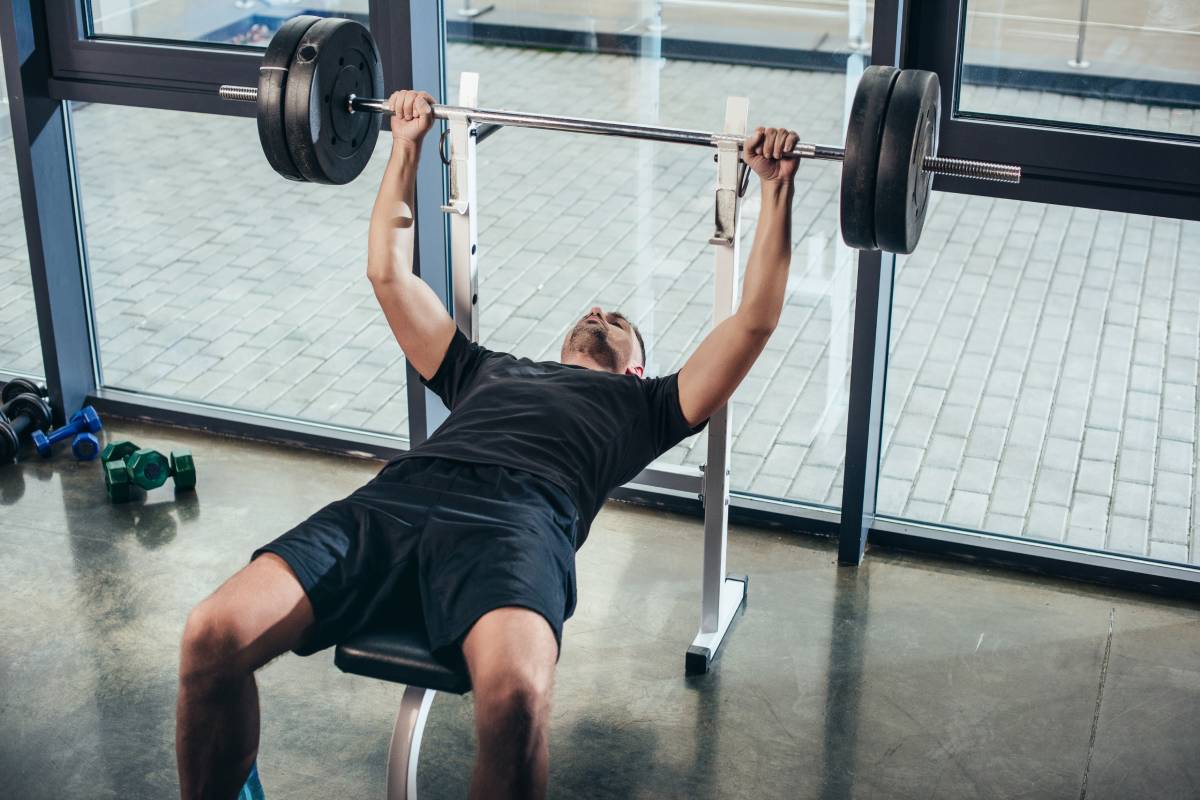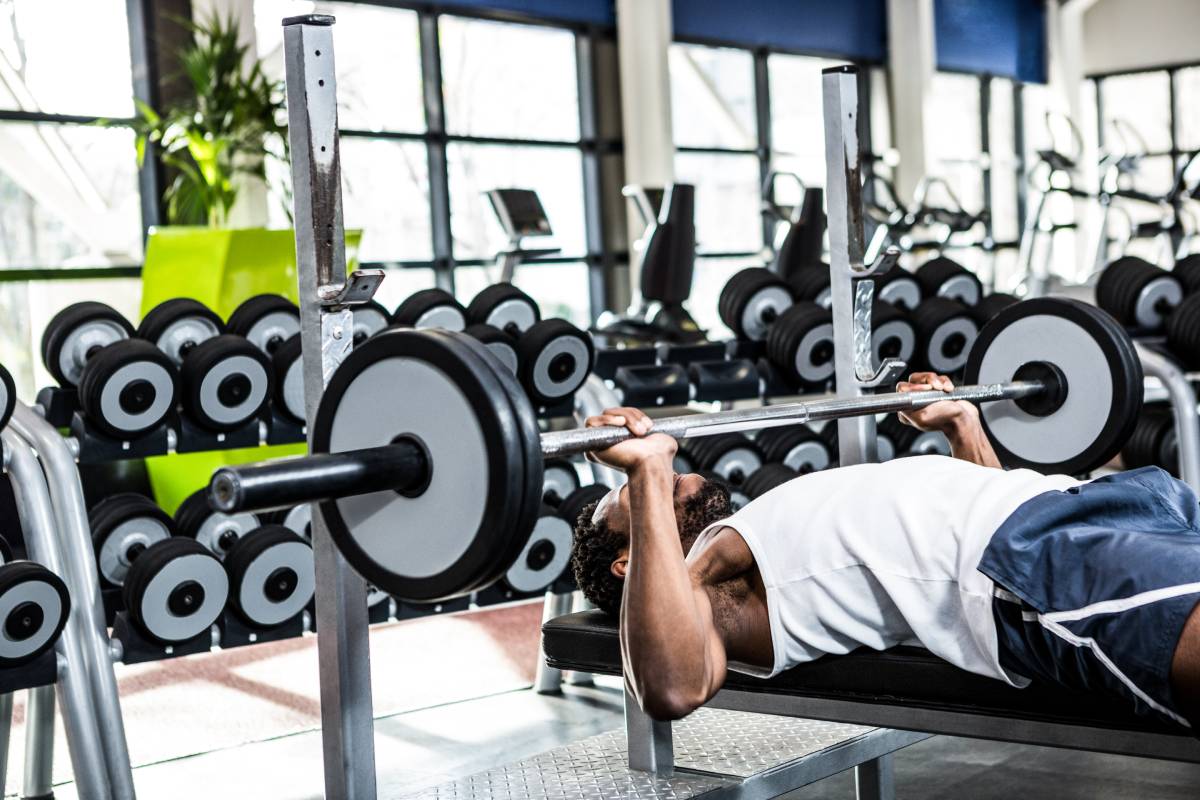The bench press is a fundamental exercise for upper body strength widely used by athletes bodybuilders and fitness enthusiasts.
This guide explores the three main variations flat, incline, and decline highlighting their unique benefits and effectiveness while answering the key question:
Can you bench press every day? Understanding these variations will help you structure your workouts for maximum strength and muscle development.
Whether you’re a beginner or an experienced lifter, mastering the right techniques can enhance performance and prevent injuries.
What Are the Three Types of Bench Press?

The flat bench press is the most common variation and serves as the foundation for upper body strength training whether at the gym or for home workouts. It primarily targets the pectoralis major anterior deltoids and triceps.
1. Flat Bench Press
The flat bench press is the most common variation and serves as the foundation for upper body strength training. It primarily targets the pectoralis major (chest muscles), anterior deltoids (shoulders), and triceps.
- How to Perform:
- Lie on a flat bench with your feet firmly on the ground.
- Grip the bar slightly wider than shoulder-width apart.
- Lower the bar slowly to your chest, keeping your elbows at about a 75-degree angle.
- Press the bar back up to the starting position, fully extending your arms.
- Benefits:
- Develops overall chest strength and mass.
- Engages multiple muscle groups simultaneously.
- Provides a stable and balanced lifting position.
2. Incline Bench Press
The incline bench press is performed on a bench set at an angle. This variation places more emphasis on the upper chest and the front shoulders.
- How to Perform:
- Adjust the bench to an incline (30-45 degrees).
- Lie back and grip the bar slightly wider than shoulder-width apart.
- Lower the bar to your upper chest while maintaining control.
- Push the bar back up to the starting position, fully extending your arms.
- Benefits:
- Targets the upper chest, creating a more defined upper-body look.
- Engages the shoulders more effectively than the flat bench press.
- Helps develop a well-rounded chest.
3. Decline Bench Press
The decline bench press is performed on a bench set at a downward angle. This variation places more emphasis on the lower chest and reduces strain on the shoulders.
- How to Perform:
- Set the bench to a decline position (typically 15-30 degrees downward).
- Secure your feet in the foot pads to maintain stability.
- Grip the bar slightly wider than shoulder-width apart.
- Lower the bar to the lower part of your chest.
- Push the bar back up to the starting position.
- Benefits:
- Focuses on the lower chest for a balanced pectoral development.
- Reduces shoulder strain compared to other variations.
- Allows for lifting heavier weights due to the biomechanics of the movement.
What Is the Most Effective Type of Bench Press?

The effectiveness of a bench press variation depends on your fitness goals. Each type offers distinct advantages:
- For Overall Strength and Size: The flat bench press is the best choice as it engages the entire chest, shoulders, and triceps effectively.
- For Upper Chest Development: The incline bench press is superior because it targets the upper chest more than the other variations.
- For Lower Chest Definition: The decline bench press is the most effective for emphasizing the lower pectorals.
Which One Should You Choose? If you want a well rounded chest, incorporating all three variations into your workout routine is the best approach. However if you are aiming for a specific look or muscle development, you should prioritize the variation that aligns with your goal.
Can I Bench Press Every Day?
Many people wonder whether they can bench press daily to accelerate muscle growth and strength gains. While it is possible it may not be the best approach for everyone.
Pros of Bench Pressing Every Day
- Increased Skill Development: Repetition helps improve technique, stability, and muscle coordination.
- Greater Strength Gains: Frequent training can lead to faster improvements in lifting ability.
- Enhanced Muscle Endurance: Daily bench pressing can improve muscular endurance over time.
Cons of Bench Pressing Every Day:
- Risk of Overtraining: Without proper rest muscles do not have time to recover and grow, leading to fatigue and potential injury.
- Increased Injury Risk: Constantly stressing the same muscle groups can lead to overuse injuries such as shoulder strain or tendonitis.
- Plateauing Results: Overworking the muscles without variation can lead to stagnation in progress.

Ideal Bench Press Frequency
For most people, bench pressing 2-4 times per week is the optimal frequency. This allows for adequate recovery while still providing enough stimulus for growth and strength gains. A good weekly routine could look like this:
- Day 1: Flat Bench Press (Heavy)
- Day 2: Rest or Lower Body Workout
- Day 3: Incline Bench Press (Moderate)
- Day 4: Rest or Active Recovery
- Day 5: Decline Bench Press (Light to Moderate)
- Day 6-7: Rest or Focus on Other Muscle Groups
If you choose to bench press daily, it is crucial to vary the intensity, volume, and exercise variations to prevent overuse injuries.
Conclusion
The bench press is crucial for building upper body strength, with variations like flat, incline, and decline targeting different chest areas.
The best type depends on your goals with flat press focusing on overall strength incline enhancing the upper chest and decline targeting the lower chest.
While daily bench pressing can improve technique training 2-4 times a week is optimal for recovery and muscle growth.
Understanding these variations and structuring your workouts effectively will help you build a stronger more defined upper body.
